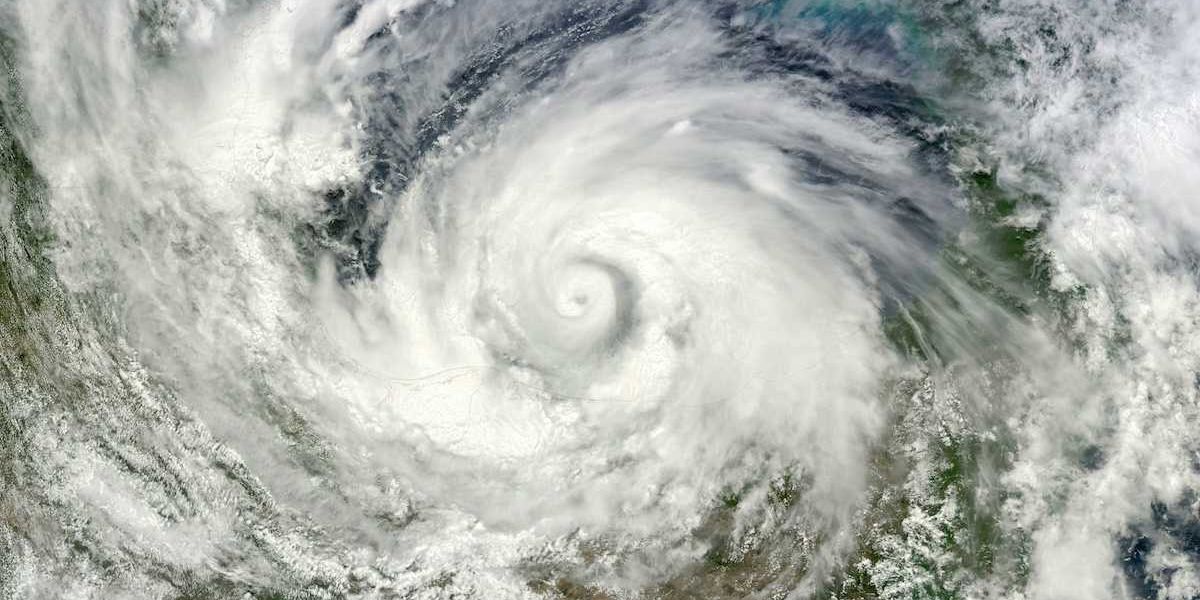reproductive_disorders
Dam failure threatens a Dow chemical complex and Superfund cleanup
Connelly: State nixes key permit for big Longview coal terminal.
President Trump has vowed to revive America's coal industry, but Big Coal suffered a major setback Tuesday in this Washington.
President Trump has vowed to revive America's coal industry, but Big Coal suffered a major setback Tuesday in this Washington.
The Washington Department of Ecology denied a key water quality permit for the proposed Millennium Bulk Terminals coal export facility in Longview, a coal export facility proposed for the site of an old Alcoa/Reynolds Metals aluminum plant.
"After careful evaluation of the application and the final State Environmental Policy Act environmental impact statement, Ecology is denying the Section 401 Water Quality Certification, with prejudice," said the state agency.
It cites potential impacts on water, clean air and climate, making the project a cause of "significant unavoidable harm."
The denial is the latest major setback in efforts to make the Pacific Northwest an export hub for the carbon economy. The proposed Gateway Pacific, north of Bellingham, was vetoed by the Army Corps of Engineers because of impacts on the Lummi Indians. Oregon has vetoed a proposed coal terminal on its side of the Columbia River.
And a oil train terminal, proposed for the Port of Grays Harbor, recently bit the dust.
Millennium would have been the biggest coal export facility in North America, with a capacity to send up to 44 million tons of Powder River and Unita Basin coal from Wyoming to Asian markets each year.
The terminal would have been supplied by 16 trains a day traveling between Wyoming and the Columbia River waterfront just west of Longview.
"The state did the right thing today, standing up for clean water, public health and the Pacific Northwest's iconic endangered salmon runs," said Jasmine Zimmer-Stucky of Power Past Coal.
"Washington State and the city of Longview deserve better than empty promises from the dying coal industry."
Speaking for a pro-coal export group, the Alliance for Northwest Jobs and Exports, Mike Bridges said rejection of the permit "lays bare the real regulatory process in Washington state is political theater.
"This process was pre-determined, and was only in search of some hook to hang their reasoning for rejecting the proposed terminal," said Bridges, president of the Longview/Kelso Building Trades.
The state identified numerous impacts in and beyond water quality in Southwest Washington.
The terminal would have meant 1,680 additional trips each year by large coal-hauling vessels traversing the Columbia River estuary, on top of 4,400 by other ships. The state cited the potential for large wakes disrupting juvenile salmon.
The project would have involved the filling of 24 acres of wetlands. Coal dust would have been discharged from mile-and-a-half long trains. Ecology also cited spills from coal trains traveling down the Columbia River.
"Project-related trains and other operations would increase diesel particulate pollution along the Reynolds Lead, BNSF spur and BNSF mainline in Cowlitz County at levels that would result in increased cancer risk rates," Ecology reported.
Cowlitz County is in need of economic growth, but the Millennium project drew widespread public opposition, noted 60 miles north in the state capital of Olympia.
"The denial reflects the will of the people:Thank you to Washington's leaders for moving us away from dirty coal and towards a clean energy future," said Joan Crooks, CEO of the Washington Environmental Council and Washington Conservation Voters.
A spokesperson for the jobs/export alliance, former Republican congressional aide Mariana Parks, brought Seattle into the picture.
"Where was the outrage, the protests, the hand wringing when King County dumped 235 million gallons of sewage into Puget Sound this past spring?" Parks asked. "Where was Ecology then? Why no public hearings or public admonishments? Where was the environmental outrage then?"
Millennium Bulk Terminals plans to appeal Ecology's decision to the state's Environmental and Land Use Hearings Office.
Columnist Joel Connelly has written about politics for the P-I since 1973.
Email Joel at joelconnelly@seattlepi.com and follow him on Facebook.
MOST POPULAR
1 Carolyn Hax: Learning to put down roots
2 Carolyn Hax: Struggling with infertility and baby-envy
3 No ‘Get Out of Jail Free’ card for exonerated Seattle man
4 Costco workers vent their spleens in these 1-star reviews
5 Tourists vs. locals: What Yelpers love in Seattle
6 Seahawks showing rare vulnerability to big plays
7 Bellevue football stripped of titles, eligible for postseason
Follow @seattlepi
Sign up for our news alerts
LATEST NEWS
New tool lets FBI crack iPhone in pimping probe
West Seattle Whole Foods plan back on
Murray: Time for adult behavior in Senate after health fiasco
NFL opts not to react to Trump's anthem kneel 'rule' tweet
Connelly: State nixes key permit for big Longview coal terminal
No ‘Get Out of Jail Free’ card for exonerated Seattle man
60 best home decorating ideas of all time
Bellevue football stripped of titles, eligible for postseason
Male infertility crisis in US has experts baffled.
The sudden rise in male infertility is a scary national crisis, and we can't blame it on Trump—or can we?
Hagai Levine doesn’t scare easily. The Hebrew University public health researcher is the former chief epidemiologist for the Israel Defense Forces, which means he’s acquainted with danger and risk in a way most of his academic counterparts aren’t. So when he raises doubts about the future of the human race, it’s worth listening. Together with Shanna Swan, a professor of environmental medicine and public health at the Icahn School of Medicine at Mount Sinai, Levine authored a major new analysis that tracked male sperm levels over the past few decades, and what he found frightened him. “Reproduction may be the most important function of any species,” says Levine. “Something is very wrong with men.”
That’s something you may not be used to hearing. It may take a man and a woman—or at least a sperm and an egg—to form new life, but it is women who bear the medical and psychological burden of trying to get—and stay—pregnant. It is women whose lifestyle choices are endlessly dissected for their supposed impact on fertility, and women who hear the ominous tick of the biological clock. Women are bombarded with countless fertility diets, special fertility-boosting yoga practices and all the fertility apps they can fit on their phone. They are the targets of a fertility industry expected to be valued at more than $21 billion globally by 2020. Even the Centers for Disease Control and Prevention fixates on women, tracking infertility in the U.S. by tallying the number of supposedly infertile women. “It is as if the entire medical realm is shaped to cater to women’s infertility and women’s bodies,” says Liberty Barnes, a sociologist and the author of Conceiving Masculinity: Male Infertility, Medicine, and Identity. “For men, there’s just nothing there.”
That absence might be understandable if women were solely responsible for the success or failure of a pregnancy. But they’re not. According to the American Society for Reproductive Medicine, the male partner is either the sole or contributing cause in about 40 percent of cases of infertility. Past infections, medical conditions, hormonal imbalances and more can all cause what is known as male factor infertility. Men even have their own version of a biological clock. Beginning around their mid-30s, male fertility gradually degrades, and while most men produce sperm to their dying day, those past 40 who help conceive have a greater risk of passing on genetic abnormalities to their children, including autism. “Men are a huge part of this problem,” says Barbara Collura, the president and CEO of Resolve: the National Infertility Association.
MOST READ
Startling new evidence suggests male infertility may be much worse than it appears. According to Levine and Swan’s work, sperm levels—the most important measurement of male fertility—are declining throughout much of the world, including the U.S. The report, published in late July, reviewed thousands of studies and concluded that sperm concentration had fallen by 59.3 percent among men in Western countries between 1973 and 2011. Four decades ago, the average Western man had a sperm concentration of 99 million per milliliter. By 2011, that had fallen to 47.1 million. The plummet is alarming because sperm concentrations below 40 million per milliliter are considered below normal and can impair fertility. (The researchers found no significant declines for non-Western men, in part because of a lack of quality data, though other studies have found major drops in countries like China and Japan.) And the decline has grown steeper in recent years, which means that the crisis is deepening. “This is pretty scary,” says Swan, who has long studied reproductive health. “I think we should be very concerned about this trend.”
Although there have reports of declining sperm counts before, they were easy to ignore. Research on sperm levels has been spotty, using different methodologies and drawing from varying groups, making it difficult to know that the declines some scientists observed were real, and not a function of miscounting. Skeptics of the latest conclusions countered that the new report was a study of many studies—it could only be as good as the work from which it drew. And even if the conclusions of the meta-analysis are accurate, the average sperm count still leaves most men on the normal side of fertile. Just barely.Yet fertility rates—the number of live births per woman—have drastically declined in the same countries with falling sperm counts. That includes the U.S., where fertility rates hit a record low this year, and where women are no longer bearing enough children to replace the existing population. Women need to average roughly 2.1 children—enough to replace themselves and their partner, with a spare bit to offset kids who don’t survive to reproductive age—to keep a country’s population stable through birth alone. The U.S. is at 1.8 and dependent on continued immigration to keep the population growing. Sociological and economic factors play a role in the changing size of the American family. Fertility rates were above the replacement level until the 2007 recession, then they plunged. And despite a years-long economic recovery and low unemployment, they’re still falling. Pair that with studies showing that nearly one in six couples in the U.S. trying to get pregnant can’t do so over the course of a year of unprotected sex—the medical definition of infertility—and it’s clear that something beyond economic insecurity is preventing Americans from having as many babies as they want. “When I see birth rates going down, I worry as a fertility doctor that men’s sperm counts are declining,” says Harry Fisch, a urologist at Weill Cornell Medicine in New York.
SIGN UP FOR OUR NEWSLETTER
SIGN UP
Update your preferences »
This would seem to be the moment for the medical world to throw everything it can at understanding what is happening to male fertility. Yet researchers on male reproduction are forced to rely on less-than-perfect data because the kind of comprehensive, longitudinal studies that might conclusively tell us what is happening to sperm counts have never been done. The irony is that the medical establishment has been accused—with reason—of ignoring the particular needs of women over the years, yet in reproduction it is men whose problems are poorly studied and often misunderstood. Some experts even wonder whether an unconscious desire to ignore threats to male fertility may be tied up in fears over the future of masculinity itself. “Here is direct evidence that that function of reproduction is failing,” says Michael Eisenberg, a urologist and an associate professor at Stanford University, referring to the latest sperm-level research. “We should try to figure out why that is.”What we do know about declining sperm counts tells us a great deal about not only reproduction but also the overall health of men—and what it tells us isn’t good. Young men may think themselves invincible, but the male reproductive system is a surprisingly temperamental machine. Obesity, inactivity, smoking—your basic poor modern lifestyle choices—can dramatically reduce sperm counts, as can exposure to some environmental toxins. Low sperm counts may presage a premature death, even among men in the prime of their lives who might seem otherwise healthy. “Sperm count decline is the canary in the coal mine,” says Levine. “There is something very wrong in the environment.” Which means there may be something very wrong with men.
Why Johnny Can’t BreedThe study of sperm has always been murky. In 1677, the Dutch draper and amateur scientist Antony van Leeuwenhoek collected his semen immediately after having sex with his wife, examined it under a microscope of his own creation and saw millions of wriggling, tiny “animalcules” swimming in the seminal fluid. The Dutchman was the first person to observe human sperm cells, though he insisted that the sperm alone made an embryo that was merely nourished by the female egg and ovaries. Van Leeuwenhoek was simply following the example of classical thinkers like Aristotle, who believed female partners at most provided a fertile bed of soil in which the seed provided by a man could germinate and flower into a child. It wouldn’t be until the 19th century that the true roles of the sperm and the egg were finally sorted out.All those wriggling “swimmers” van Leeuwenhoek saw are what you would see if you magnified the sample of a healthy fertile man. A sperm cell is built for one thing: motion. Its torpedo-like head is a nugget of DNA containing the 23 chromosomes the male partner contributes to his future child, connected to a long tail or flagellum that propels the sperm to the egg, all running on the cellular rocket fuel of fructose, which is in the semen. Most sperm will never come close to an egg—while a fertile man ejaculates 20 million to 300 million sperm per milliliter of semen, only a few dozen might reach their destination, and only one can drill through the egg’s membrane and achieve conception. The chemical makeup of the vagina is actively hostile to sperm, which can only survive because semen contains alkaline substances that offset the acidic environment. That’s the paradox of sperm counts—although one healthy sperm is enough to make a baby, it takes tens of millions of sperm to beat the odds, which means that significant declines in sperm counts will eventually degrade overall male fertility. Notes Swan: “Even a relatively small change in the mean sperm count has a big impact on the percentage of men who will be classified as infertile or subfertile”—meaning a reduced level of fertility that makes it harder to conceive.
The fears about male infertility go beyond the stuff of dry science. “It’s the virility and fertility dilemma,” says Sharon Covington, an infertility therapist in Maryland. “How a man sees himself, and how the world sees him as a man, is often tied to his ability to impregnate a woman.” So perhaps it’s not surprising that the argument over how much sperm counts are declining—if they are declining—has been less a courteous scientific debate than a ferocious battle that has gone on for more than two decades.
This war began in Denmark, in 1990, when Danish pediatric endocrinologist Niels Skakkebaek began looking into male reproductive health. For years, he had been troubled by the rise in testicular cancer, as well as an increase in the number of boys with malformed testes. He thought assessing sperm quality and quantity might give him a clue to what was happening to his patients.
In 1992, Skakkebaek and colleagues reviewed all the published studies of sperm counts from around the world. (Sperm counts are done by tallying the number of sperm cells in one microliter of semen and then multiplying by 10,000 to estimate the total sperm in a milliliter—not dissimilar from the way police try to estimate the size of a large crowd from a geographic sample.) They calculated that the average sperm count in 1940 was about 113 million per milliliter of semen, and that by 1990 it had fallen to 66 million. In addition, they saw a threefold increase in the number of men with a sperm count below 20 million, the point at which infertility becomes a serious risk.Skakkebaek’s 1992 paper raised concern about the ability of the human species to continue reproducing itself, but skeptics immediately attacked, questioning the reliability of the original sperm studies the analysis was based on. The studies drew from very different groups of men of varying age and fertility. (Sperm count tends to decline with age, and men who gave a semen sample in a visit to a fertility clinic can reasonably be expected to have a lower count than, say, healthy men selected as donors for a sperm bank.) Some scientists believe older and less precise techniques for sperm counting may have artificially inflated the sperm levels of our fathers and grandfathers, which would make the drop to current counts appear steeper than it is.That’s why the new meta-analysis is so important. Swan, Levine and their international colleagues carefully sorted through more than 7,500 peer-reviewed papers before narrowing their search to 185 papers involving 43,000 men from around the world. By excluding studies before 1973, they cut out some of the less reliable older measurements, and they discarded any studies of men with known fertility complications or who were smokers, since smoking lowers sperm count. It’s not perfect—no meta-analysis is—but this evidence is the best we currently have, and the conclusions are disturbing. “The community is coming around on this,” says Eisenberg. “There have been some good counterarguments about sperm-level decline, but this paper really puts a lot of those arguments to bed.”Environmental CastrationProving that sperm levels are dropping has been difficult enough, and teasing out the cause is even tougher. Obesity, which has risen dramatically in Western countries while sperm counts have supposedly dropped, is linked to poor semen quality, as is physical inactivity. A 2013 study of American college students found that men who exercised more than 15 hours a week had sperm counts 73 percent higher than men who exercised less than five hours a week. And men who watched 20 or more hours of TV a week had much lower sperm counts than those who watched little to no TV. Stress is also a risk factor, as is alcohol use, which is on an upswing in the U.S., and drug use, which is increasing thanks to the opioid epidemic. Some scientists have theorized that electromagnetic fields from devices like cellphones could degrade semen quality, leading to weak and immobile sperm. Even heat can play a role. We know for certain that high temperatures can kill sperm, which is why the testicles are outside the body, keeping them up to 5.4 degrees cooler. Researchers know that birth rates decline nine months after a heat wave, leading some infertility experts to believe that climate change may actually be a factor in sperm count decline.Age also matters. In a recent study, Laura Dodge of Beth Israel Deaconess Medical Center looked at thousands of attempts at in vitro fertilization (IVF) performed in the Boston area and tried to gauge the impact of both male and female age on success. Female age remained the dominant factor, but male age factored in as well—women under the age of 30 with a male partner between 40 and 42 were significantly less likely to give birth than those whose male partner was between 30 and 35. That dovetails with other research showing that as men age, their sperm suffers increasing numbers of mutations, which in turn can make it slightly more likely that their children will be born with disorders like autism and schizophrenia. Older mothers may get the blame for infertility, but a new study found that new fathers in the U.S. are on average nearly four years older than they were in 1972, while almost 9 percent of new American fathers are over 40, double the percentage from 45 years ago. “We tell men that age is not an issue, but now we know that the male biological clock is real,” says Fisch.So is it simply modern life itself—obesity, inactivity, stress, cellphones, even older parenthood—that’s driving down sperm levels? It’s the beginning of an answer, but not the full one. Tobacco use definitely hurts sperm counts, yet smoking has fallen significantly in the U.S. That’s one reason a growing band of researchers have come to suspect the influence of toxins in the environment—specifically, endocrine-disrupting chemicals found in compounds like bisphenol A (BPA) and phthalates.The theory is straightforward enough: These chemicals mimic the effect of the feminizing hormone estrogen and can interfere with masculinizing hormones like testosterone. The chemicals, which are found in many plastics throughout the environment, may be rewiring the sensitive male reproductive system, eroding sperm quality and quantity and even contributing to the sort of testicular disorders that first alarmed Skakkebaek years ago. The production of sperm is tightly regulated by the body’s hormones, and so any interference with those hormones—say, through exposure to endocrine-disrupting chemicals—could make itself felt first through damage to sperm quantity or quality. “You could still have sperm, but [levels] might be significantly lower than your father’s,” says Germaine Louis, the director and senior investigator at the Eunice Kennedy Shriver National Institute of Child Health and Human Development.Most of the evidence for how these chemicals affect sperm comes from animal studies. A 2011 study found that mice who received daily BPA injections had lower sperm counts and testosterone levels than mice who received saline injections. A startling study from 2016 of fish in U.S. wildlife refuges in the Northeast found that 60 to 100 percent of all the male smallmouth bass studied had eggs growing in their testes—a startling feminization—which researchers linked to endocrine disrupters in the waters. Other studies have shown that phthalates appear to disrupt the masculinization of young lab rats. Animal models aren’t perfect, but as University of Texas toxicologist Andrea Gore notes, “the biology of reproduction is incredibly similar in all mammals. We are all vertebrates, and we have the same reproductive organs and processes that develop similarly with the same hormones.”Scientists can’t expose humans to endocrine disrupters in a controlled experiment, but some recent research has found associations between exposure to BPA and phthalates in the world, and declining sperm counts and male infertility in adults. A 2010 study of Chinese factory workers by De-Kun Li at Kaiser Permanente found that increasing levels of BPA in urine were significantly linked with decreased sperm count and quality, even among men who were exposed to levels of BPA comparable to men in the general American population. Another study from 2014 followed about 500 couples trying to conceive and found that phthalate exposure among men was tied to reduced fertility. These findings are all associations, which means that while exposure to endocrine disrupters is more likely to be found in men suffering from reduced fertility, it doesn’t mean that the chemicals themselves are definitively the cause. But the studies are stacking up. “For some of the endocrine disrupters like phthalates, the basic evidence is strong that they affect reproductive health,” says Louis, who carried out the phthalates study.Even more concerning, but harder to prove, is the damage endocrine disrupters may be doing in utero. As a fetus develops in a mother’s uterus, it is barraged by hormones and other chemicals that sculpt development. That includes the male reproductive system—testicles are formed in the womb, and although sperm levels can be altered in adulthood, they seem to be largely set before a boy is born. That means we could see sperm levels continue to decline for years, as boys who were exposed to endocrine disrupters before birth reach reproductive age and run into problems trying to have children of their own. “This trend hasn’t turned around, and it’s not going to turn around on its own,” says Swan, who has been studying the effects of endocrine disrupters for decades. “We don’t have a lot of time to lose.”The Baby Un-BoomIf this is a crisis, why is the medical establishment still arguing over the accuracy of statistical methods that approximate sperm levels from a variety pack of studies? Trying to figure out what is happening to sperm levels isn’t like trying to create an HIV vaccine. Researchers could follow a cohort of representative men from early adulthood through their reproductive years, taking regular semen samples under the same conditions and tracking lifestyle and environmental factors, including exposure to endocrine-disrupting chemicals. Such long-term studies aren’t easy or cheap, but somehow we’ve managed to pull them off for certain illnesses, like cardiovascular disease and cancer. The future of the human race—whether it has one—would seem to qualify as an important topic to explore in depth. “Why are we messing about with this?” says professor Allan Pacey, a male fertility expert at the University of Sheffield. “Let’s just answer the question.”A major, comprehensive study of semen quality has never been funded, however. Doctors are reluctant to even ask men for semen samples, and most men seem reluctant to give one—even though, as Eisenberg wryly notes, “it’s a lot more pleasant for the patient than a blood draw.”
“Male infertility has been ignored for 30 years,” says Christopher Barratt, a professor of reproductive medicine at the University of Dundee in Scotland. “What we understand can be written on a postage stamp.”The average man knows much, much less. Few men could even name the medical specialty that covers male reproductive health—it’s urology—and fewer still have ever seen a urologist, given that there are fewer than 12,000 of them in the U.S., about one-third the number of OB-GYNs in the country. Aside from a few online forums, there are no real support systems for men with infertility issues. Many men lack basic knowledge about risk factors for infertility. A 2016 Canadian study found that men could identify only about 50 percent of the potential risks to sperm production, largely missing out on known threats like obesity and frequent bicycling. “Most men just assume that when they want to have children they’ll be able to,” says Phyllis Zelkowitz, the director of research at the Jewish General Hospital in Montreal and the lead author on the study. “But that isn’t the case for a certain number of people.”The continued ignorance of male infertility is, in its way, another form of male privilege. Pretending that pregnancy is almost entirely a female responsibility means that women are forced to carry the burden and the blame when it goes wrong, while men, who are just as vital to healthy conception, rarely worry about how their lifestyles impact their own fertility or their possible children. “Women will often be sent to invasive, expensive procedures for fertility before a sperm test is ever done,” says Resolve’s Collura.So men are getting off free while their female partners put themselves through painful and expensive fertility treatments. Well, not exactly. The constant production of new sperm cells makes semen highly sensitive to toxins and disease, making it an ideal surrogate for male health—“like blood pressure,” as Louis puts it—beyond what it might signal for fertility. Poor sperm levels and infertility are a clear sign that men’s health is failing. One 2015 study found that men diagnosed with infertility have a higher risk of developing health issues like heart disease, diabetes and alcohol abuse, while another connected infertility to cancer. “Semen quality isn’t just about a couple getting pregnant,” says Louis. “There is increasing evidence at the population level that men with diminished semen quality die earlier and have more chronic diseases. This is as important to health as any disease state.”That male reproductive health goes mostly ignored in the face of those concerns is a striking example of what Cynthia Daniels, a political scientist at Rutgers University and the author of Exposing Men: The Science and Politics of Male Reproduction , calls the “paradox of male privilege.” A society that values men over women would presumably pour money and resources into determining exactly what is happening to sperm counts and reproductive health. But that would risk confirming that men, who are socially conditioned to think of themselves as indestructible, are in fact vulnerable—and vulnerable in that part of themselves most vital to manhood. At a moment when other talismans of masculinity, like the ability to financially support a family, are under assault, acknowledging the risk to reproduction may feel even more threatening to men. “Recognizing the male reproductive health problem unravels the notion of who men are and how they achieve masculinity,” says Daniels. “It seems to be more important to protect our norms of masculinity and traditional gender relations than it is to address the real health needs of men.”
One way to accomplish that goal is to enable men to take responsibility for their reproductive health. That’s what Greg Sommer, the chief scientific officer of Sandstone Diagnostics, is trying to do with Trak, a kit men can use to evaluate their sperm levels. It’s one of several similar do-it-yourself sperm testing services that offer men the chance to assess their own fertility without stepping inside a doctor’s office. That approach is more than a mere convenience because men are significantly less likely to go to the doctor than women, especially men in their prime reproductive years, when their health is otherwise likely to be good.Real, substantive change is needed from the medical and funding communities to address the male infertility crisis. It may be true, as skeptics countered after the publication of Swan and Levine’s meta-analysis, that we’re a long way from declining sperm counts heralding the end of the human race, at least as portrayed in works of pop art like The Children of Men and The Handmaid’s Tale . Millions of men and women are having children every day—even if an increasing number need artificial help like IVF. Yet more and more countries find themselves unable to raise their fertility rates above the level needed to replace their population, leading one prominent demographer to prophesy that the world has already reached “peak child.”It’s difficult not to wonder and worry about what will come next. “It’s an inconvenient message, but the species is under threat, and that should be a wake-up call to all of us,” says Skakkebaek. “If this doesn’t change in a generation, it is going to be an enormously different society for our grandchildren and their children.”Assuming, of course, they can have them.
Label salon products to disclose risks.
Imagine that your favorite hair product’s label read, “Warning: may cause infertility,” or listed “formaldehyde,” a cancer-causing embalming fluid, as an ingredient.
Subscribe
Sign In
Opinion
Label salon products to disclose risks
By David KleinAugust 17, 2017
Imagine that your favorite hair product’s label read, “Warning: may cause infertility,” or listed “formaldehyde,” a cancer-causing embalming fluid, as an ingredient. Whatever our products contain, you and I remain blissfully ignorant of our exposure and risk because professional cleaning and salon products often do not label their ingredients (although our hair probably looks fabulous).
The Legislature is debating AB1575 and SB258, two bills to improve labeling for salon-grade nail polish, shampoos and hair coloring, cosmetics and skin cleaning products, as well as toothpaste, household cleaning products and automotive industry cleaning products. If you or your loved ones use these products, you should ask your representative to ensure the bills pass. Let me tell you why.
Unlike medications, commercial chemicals undergo little, if any, testing before being introduced into our world. Currently, 9.5 trillion pounds of commercial chemicals pass annually through the United States: enough to dump a new 14-ton sack of industry-grade mystery dust on each American’s pillow each night of each year. Though some may temporarily irritate the skin and lungs, many are endocrine-disrupting chemicals like diethylstilbestrol, or DES, that disrupt our hormone systems and cause disease even in low doses.
The story of DES is one well-studied, notorious example of chemical harms. It was prescribed during the Baby Boom era to prevent pregnancy miscarriage, and is now linked to infertility, obesity and cancer in women who were exposed to this drug in the womb. New data suggest that even the grandchildren of women prescribed DES bear higher disease risks. Chemicals like DES can change the ways that inherited genes are turned on and off, their negative effects to ripple through our genes for generations.
Though industry does respond to public concern, poor transparency remains problematic. Take bisphenol A, or BPA. We know that BPA negatively affects adult fertility and babies’ neurologic development, so “BPA-free” stickers helped companies market their products to safety-aware consumers. While we were looking for stickers, BPA was merely replaced with similar chemicals.
Similarly, the so-called “Toxic Trio” (formaldehyde, toluene, dibutyl phthalate) found in numerous nail polishes prompted companies to claim their product was toxin free. A 2012 report by the California Environmental Protection Agency revealed that these claims were often false.
Some will complain that change is onerous. Surely, products often contain many ingredients, and chemical names read like over-hyphenated alphabet soup. It can be a confusing list. But this is not cause to conceal information. A legal requirement of disclosure will help to ensure the manufacture of safer, faithfully-labeled products.
Moreover, there are solutions. Small pictograms, such as a picture of a pregnant woman with an overlying “X,” will cut through the confusion and convey a message as clear as the modern skull and crossbones. In some cases, that may be appropriate too.
Keep our communities safe and informed. Tell your representative that you vote for transparency.
David Klein is a resident ob-gyn physician at UCSF.
THE CHRONICLE RECOMMENDS
Local
Solar eclipse shines a light on bogus shades and profiteers
Local
Family feud threatens Caffe Trieste, center of SF’s bohemian
Local
Fleeing repression, Jewish immigrants found success in Gold Rush
Top 100 Restaurants
Top 100 Restaurants 2017: Savor Bay Area's best
TopAbout
Our Company Ad Choices CareersTerms of UseAdvertisingPrivacy PolicyYour Privacy RightsYour California Privacy RightsContact
Customer ServiceFrequently Asked QuestionsNewsroom ContactsConnectServices
ProfileSubscriber Servicese-editionAppArchivesMembershipStoreSubscription Offers
© Hearst Corporation
Australia emits mercury at double the global average.
A report released this week by advocacy group Environmental Justice Australia presents a confronting analysis of toxic emissions from Australia’s coal-fired power plants.
A report released this week by advocacy group Environmental Justice Australia presents a confronting analysis of toxic emissions from Australia’s coal-fired power plants.
The report, which investigated pollutants including fine particles, nitrogen oxides and sulfur dioxide, also highlights our deeply inadequate mercury emissions regulations. In New South Wales the mercury emissions limit is 666 times the US limits, and in Victoria there is no specific mercury limit at all.
This is particularly timely, given that yesterday the Minamata Convention, a United Nations treaty limiting the production and use of mercury, entered into force. Coal-fired power stations and some metal manufacturing are major sources of mercury in our atmosphere, and Australia’s per capita mercury emissions are roughly double the global average.
In fact, Australia is the world’s sixteenth-largest emitter of mercury, and while our government has signed the Minamata convention it has yet to ratify it. According to a 2016 draft impact statement from the Department of Environment and Energy:
Australia’s mercury pollution occurs despite existing regulatory controls, partly because State and Territory laws limit the concentration of mercury in emissions to air […] but there are few incentives to reduce the absolute level of current emissions and releases over time.
Mercury can also enter the atmosphere when biomass is burned (either naturally or by people), but electricity generation and non-ferrous (without iron) metal manufacturing are the major sources of mercury to air in Australia. Electricity generation accounted for 2.8 tonnes of the roughly 18 tonnes emitted in 2015-16.
Mercury in the food web
Mercury is a global pollutant: no matter where it’s emitted, it spreads easily around the world through the atmosphere. In its vaporised form, mercury is largely inert, although inhaling large quantities carries serious health risks. But the health problems really start when mercury enters the food web.
I’ve been involved in research that investigates how mercury moves from the air into the food web of the Southern Ocean. The key is Antartica’s sea ice. Sea salt contains bromine, which builds up on the ice over winter. In spring, when the sun returns, large amounts of bromine is released to the atmosphere and causes dramatically named “bromine explosion events”.
Essentially, very reactive bromine oxide is formed, which then reacts with the elemental mercury in the air. The mercury is then deposited onto the sea ice and ocean, where microbes interact with it, returning some to the atmosphere and methylating the rest.
Once mercury is methylated it can bioaccumulate, and moves up the food chain to apex predators such as tuna – and thence to humans.
As noted by the Australian government in its final impact statement for the Minamata Convention:
Mercury can cause a range of adverse health impacts which include; cognitive impairment (mild mental retardation), permanent damage to the central nervous system, kidney and heart disease, infertility, and respiratory, digestive and immune problems. It is strongly advised that pregnant women, infants, and children in particular avoid exposure.
Australia must do better
A major 2009 study estimated that reducing global mercury emissions would carry an economic benefit of between US$1.8 billion and US$2.22 billion (in 2005 dollars). Since then, the US, the European Union and China have begun using the best available technology to reduce their mercury emissions, but Australia remains far behind.
But it doesn’t have to be. Methods like sulfur scrubbing, which remove fine particles and sulfur dioxide, also can capture mercury. Simply limiting sulfur pollutants of our power stations can dramatically reduce mercury levels.
Ratifying the Minamata Convention will mean the federal government must create a plan to reduce our mercury emissions, with significant health and economic benefits. And because mercury travels around the world, action from Australia wouldn’t just help our region: it would be for the global good.
Considering 'Mad Max' and other Hollywood dystopias after Trump's exit from Paris accord.
Film and literature — to say nothing of our private insecurities — resound with a world that freezes, boils, chokes, cracks with earthquakes, dwindles with resources and succumbs to pestilence and disease.
Since the plagues of the Old Testament, we have contemplated the Apocalypse, the world rising in vengeance as men, women and children scurry across the brutal landscape of a lost paradise. Skies rain hail, locusts swarm, rivers turn to blood, darkness falls.
Our doomsday stories and how they scroll and flash before us have changed since the parchment days of the Bible. But we remain fascinated by the specter of our demise, whether the end is wrought by deities, our own folly or imposed by outside forces like monsters, asteroids and aliens that have haunted us since Orson Welles’ 1938 “War of the Worlds” radio broadcast.
Few of our dystopias, however, are as frightening as the planet gone asunder, polluted and destroyed by humanity’s amorality, recklessness and greed. Film and literature — to say nothing of our private insecurities — resound with a world that freezes, boils, chokes, cracks with earthquakes, dwindles with resources and succumbs to pestilence and disease.
Images of glacier walls crashing into oceans, arid lands, smudged skies and Hollywood disaster scenarios have reverberated across social media since President Trump withdrew the U.S. from the Paris climate accord. The president said the pact, signed by 195 nations to reduce carbon emissions, would undercut business, hurt American workers and “weaken our sovereignty.”
“The Paris Agreement handicaps the United States’ economy in order to win praise from the very foreign capitals and global activists that have long sought to gain wealth at our country’s expense,” said Trump. “They don’t put America first. I do. And I always will.”
Perhaps more than any other moment in his presidency, Trump’s action highlighted a Darwinian world view in which the planet is less a community than an unforgiving marketplace for countries to compete and barter. Terrorism, Russia’s cyber meddling in the U.S. election and the nuclear ambitions of North Korea, whose leader Kim Jong Un taunts like a despot in an end-of-days movie, have unsettled Americans. But exiting the climate pact has raised larger existential questions at a time of rising seas, droughts and melting ice caps.
Hollywood for decades has spun science fiction and horror out of environmental calamity. In 1973, the thriller “Soylent Green” ventured to the year 2022, when the Earth was endangered by pollution and the greenhouse effect. Natural disaster movies related to climate change and pollution became a staple, including “The Day After Tomorrow” (2004), about storms raging across the globe in a new ice age, and the Mad Max series going through “Mad Max: Fury Road” (2015), where roving clans fight over gasoline and water on a crazed and poisoned Earth.
These stories foreshadowed and articulated the anxieties of a new century marked by wars and multiplying images of environmental degradation. The planet seemed to be shrinking, and every click of the screen — every YouTube rant, beheading, cyclone and story uttered — made us intimate with the ills that for so long seemed foreign and safely beyond our borders.
The world in these films is dark and unredemptive, a landscape of memory and rage where pictures of beaches and fields of green are eerie artifacts of humanity’s hubris and capacity to imperil what gives it life. Man becomes cast against himself in a cruel struggle for survival, such as the father and son who roam, scavenge and hide beneath slate skies in “The Road” (2009). The mood and tone are similar in “Children of Men” (2006), set in a desolate and violent London after pollution and other evils, which prove just as devastating as an asteroid strike, have rendered humanity infertile.
As the science of global warming has matured, and documentaries like Al Gore’s “An Inconvenient Truth” (2006) have explored its devastating consequences, the planet’s frailty has come into sharper focus, even as many Republicans, including Trump, question the causes that could spell our undoing. That dilemma and Trump’s decision on the Paris treaty will figure in Gore’s upcoming follow-up: “An Inconvenient Sequel: Truth to Power.”
The preoccupation over the planet’s future and its increasing interconnectedness have, according to novelist Junot Diaz, made dystopian themes “the default narrative of the generation.”
“The steady drum beat of reports from our best and brightest scientists has made it explicitly clear that, whether we like or whether we want to admit it or not, we have damaged our planet in ways that have transformed us into a dystopian topos,” he said in a podcast with the Boston Review. “We are making the genre in which we are living, and we are making it at such an extraordinary rate.”
Trump’s election and the bitter political and societal chasms it revealed has brought back into vogue a number of dystopian novels, including George Orwell’s “1984,” Philip Roth’s “The Plot Against America” and Margaret Atwood’s “The Handmaid’s Tale,” the story of infertility and turning women into slaves, which has been adapted for a heralded Hulu series. As in “The Road,” the exact cause of cataclysm in “The Handmaid’s Tale” is nebulous, a frightening, creeping concoction that plays with our imagination.
There is little doubt about the cause of ruin in “Chasing Coral,” a Netflix documentary on climate change and the death of coral reefs. The film, which opens in July, focuses on how warming waters around the Great Barrier Reef in Australia are bleaching the reef’s colors — imagine a rainbow turning to ash — and ability to sustain life.
“Our oceans are dramatically changing and we are losing coral reefs on a global scale,” director Jeff Orlowski said. “We spent three years with divers, underwater photographers and experts to reveal the majesty of our oceans and the rapidly changing reality of our world. What we witnessed while making this film reshaped my understanding of the world.”
The film is likely to intensify the debate around global warming and how filmmaking and other arts challenge and speak to conflicting agendas. A timely, if seemingly satirical, blurring of the lines between our fictions, politics and realities comes to mind in “Dystopian Visions,” a new class former presidential candidate Sen. Rand Paul will teach at George Washington University.
Such visions haunt and often remind us of nature’s splendor and fragility, and what happens when species go extinct and winds howl arid and foul. They also leave us (and Hollywood) with questions: How does one generation explain to the next that their birthright is jeopardy? That chaos sprung from folly or chance is irreparable, and that destiny is bound in dereliction?
In her 1826 post-apocalyptic novel about a plague, “The Last Man,” Mary Shelley, who also gave us “Frankenstein,” pondered: “What is there in our nature that is forever urging us on towards pain and misery?”
Kevin Costner’s interminable “Waterworld” (1995) imagined a planet where the polar ice caps melted and everyone lived on ships and floating outposts, hoarding jars of dirt like relics while searching for mythical dry land. In “Blade Runner” (1982), a revolutionary work by director Ridley Scott, Los Angeles of 2019 is a garish and desolate landscape where cops battle synthetic humans known as “replicants.” Earth has become shades of grays and neon, tree-less and shadowed by Orwellian industrial towers. Not surprisingly, a sequel, “Blade Runner 2049,” will open this year.
But man is a creature of hope, cunning and delusion. Waste a planet, find an escape; or in biblical terms, endure banishment from the Garden of Eden. That is the theme of “Interstellar” (2014), when a team of astronauts seeks a wormhole in space to deliver humanity from the shriveled crops, blowing dust and the environmental catastrophe Earth has become. It seems our ingenuity to find someplace new is stronger and more fierce than it is in fixing the place we are.
“We didn’t run out of planes and television sets,” says one character, “we ran out of food.”
That is too pessimistic an epitaph for many Hollywood films, where even in demise there’s a promise of resurrection. A scientist played by Michael Caine, whose soothing voice can make a lie sound like the truth, adds: “We’re not meant to save the world. We’re meant to leave it.”
Essay: I'm worried having a baby will make climate change worse.
Part of my motivation for becoming a climate scientist was my grave worries for our future and my desire to make a positive contribution. In today's world, this isn't straightforward.
Part of my motivation for becoming a climate scientist was my grave worries for our future and my desire to make a positive contribution. In today's world, this isn't straightforward.
Earlier this year, I wrote publicly of my qualms around desiring children. I have always loved children and always wanted children in my own life. At the same time, among my friends and colleagues, such ordinary desires are increasingly accompanied by long, complex conversations about the ethics of such aspirations.
Children born today face a dramatically different climate future than their parents did.A child born today is a child of a changing – and extreme – global climate. The decision to have a child is a decision to exacerbate such climate extremes.
We collectively recycle, switch off lights, install LEDs and chose green energy providers. But such measures are more than negated by a decision to have children; having a child in Australia is an ongoing commitment to a high carbon future.
At the same time that I wrangled with the inter- and intra-generational consequence of having children, I also experienced years of infertility. Friends married, bought houses and announced surprise babies. All the while, my partner and I were consumed by tests, injections and surgeries, but mostly by unrelenting grief.
Over these years, I analysed climate data demonstrating an extreme future born of our global policy prevarication. Meanwhile, I was dragged into an undertow of crushing sadness, as miscarriage followed miscarriage and my connections to the world slipped further away from me.
Perhaps this was all for the best, I thought. After all, a child is irreconcilable with my professional dedication to remedying our global challenges.
And then, just as senselessly as our grief began, it ended. For no particular reason, the expected bad baby news never arrived and now the complexity of having an imagined child will become a concrete ethical entanglement.
Older climate scientists speak widely about their worries for their grandchildren and the world they have provided them. While such concerns must weigh on older minds, younger climate scientists' future concerns require active deliberation. Should we have children? And if we do, how do we raise them in a world of change and inequity? Can I reconcile my care and concern for the future with such an active and deliberate pursuit of a child?
Put simply, I can't. Nowadays, the pitter-patter of tiny feet is inevitably the pitter-patter of giant carbon footprints. Reusable nappies, a bike trailer and secondhand jumpsuits might make me feel like I'm taking individual action but they will achieve little. A child born today is inevitably a consumer and, most significantly, is a consumer of greenhouse gases.
Our much longed for child will both exacerbate climate change and will have to fix the problems set in motion by its parents and grandparents. In essence, this burden is the choice I have made for my child.
Having made the decision to multiple my own carbon footprint in perpetuity and to inflict an extreme climate future on my daughter, the question becomes – what now?
Living in and starting a family in volatile and uncertain times are not unique experiences. My grandmother fled Europe in the early 1950s for a better life in Australia. A German Jew, her family had been scattered, with herself interned in Britain, her sister lost in Auschwitz and her family's desperate flight rebuffed by an indifferent world. Years of horror, combined with strict rations and economic uncertainty drove her to strike out bravely for a new life in Australia with her young babies.
Climate change is a critically different problem. In my grandmother's time of abject horror, good people were empowered – to varying degrees – to do good. After the war ended, the actions of just a few were recognised as having salvaged the honour of all our humanity. Nowadays, the very act of living in Australia, regardless of concern for our climate future, is detrimental.
I do not pretend my motivation for having children was anything other than entirely selfish, but I hope the consequences are not. Just as in my grandmother's time when horror was countered by hope, the obverse of our climate challenge is opportunity. I hope today's children, born of a complex admixture of anxiety, guilt and fear, but all the while fiercely desired, can do better than their parents did. I hope they can be more empathetic, more creative and more responsive than we have been.
As for myself, my work thoughts should be punctured by worry. By senseless luck, my forthcoming daughter will have the opportunity to thrive in a warming world. Many, such as the children of our Pacific Island neighbours, will not. This should prompt more sadness, not less.
Nonetheless, in recognising the sadness of our near neighbours, I also feel compelled to recognise the beauty and opportunity of my own life. Despite my uncomfortable internal conflicts, the impending arrival of a much-wanted baby is intensely joyful.
Dr Sophie Lewis is a climate scientist and research fellow at the Australian National University.









